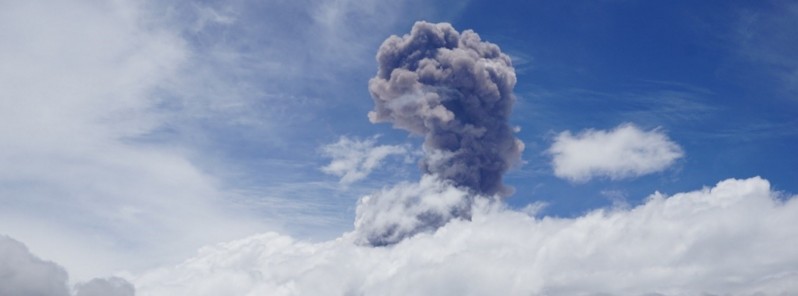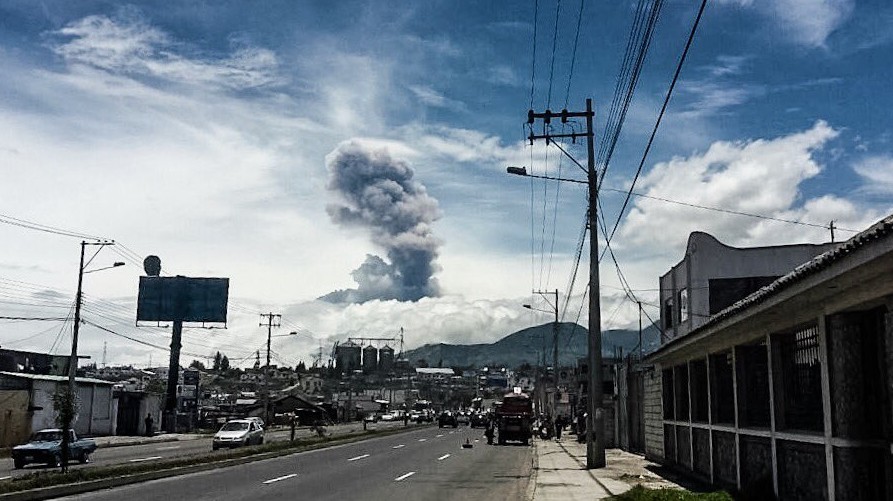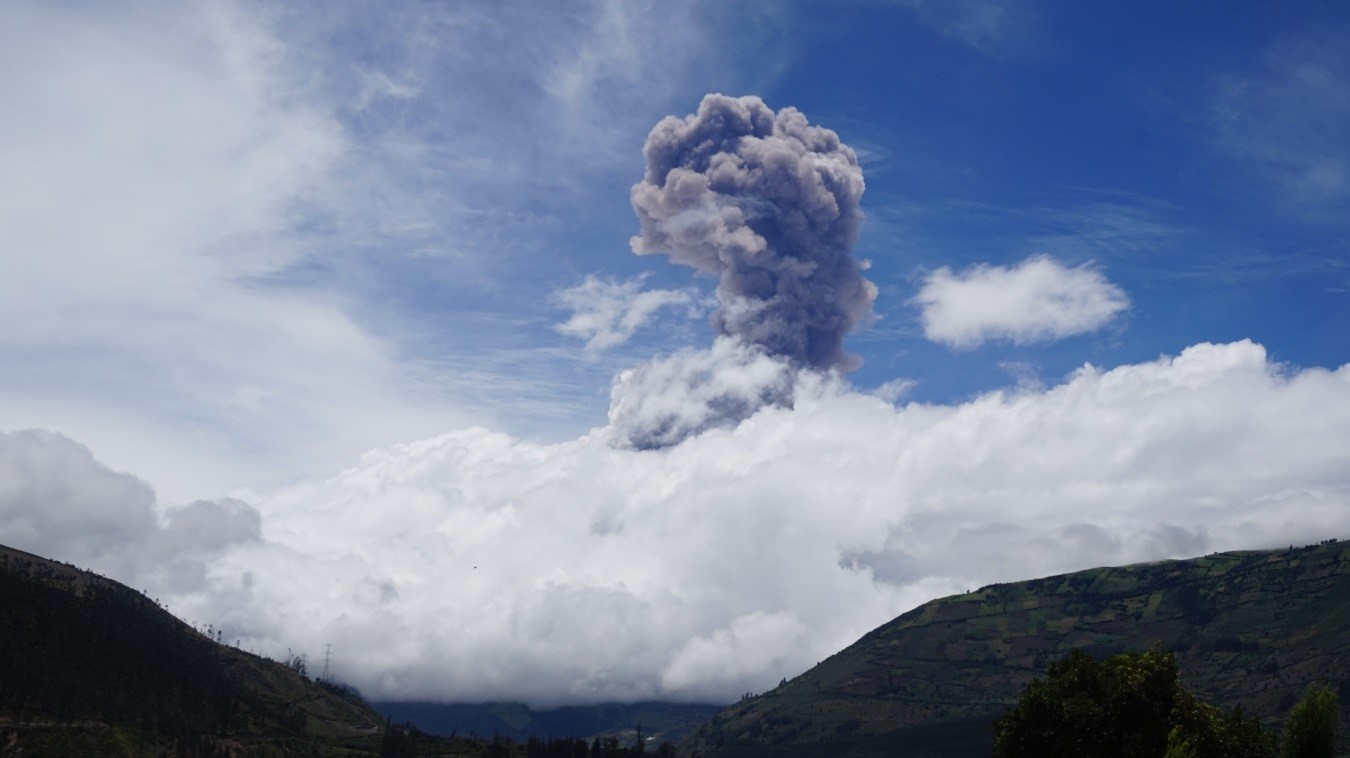Tungurahua erupts sending ash more than 6 km above the crater, Ecuador

Ecuador's Tungurahua erupted at 17:02 UTC on February 26, 2016, sending ash more than 6 km (19 685 feet) above the crater (11 km / 36 089 feet a.s.l.).
IGEPN reported there have been four explosions so far today.
Ash emissions were observed traveling north-west. Ash fall was reported in Chonglontus, El Manzano and Cahuají.

Tungurahua eruption on February 26, 2016. Image credit: El Tuitero Sismico (via Twitter)

Tungurahua eruption on February 26, 2016. Image credit: IGEPN
Geologic summary
Tungurahua, a steep-sided andesitic-dacitic stratovolcano that towers more than 3 km above its northern base, is one of Ecuador's most active volcanoes. Three major edifices have been sequentially constructed since the mid-Pleistocene over a basement of metamorphic rocks. Tungurahua II was built within the past 14,000 years following the collapse of the initial edifice.
Tungurahua II itself collapsed about 3000 years ago and produced a large debris-avalanche deposit and a horseshoe-shaped caldera open to the west, inside which the modern glacier-capped stratovolcano (Tungurahua III) was constructed. Historical eruptions have all originated from the summit crater, accompanied by strong explosions and sometimes by pyroclastic flows and lava flows that reached populated areas at the volcano's base. Prior to a long-term eruption beginning in 1999 that caused the temporary evacuation of the city of Baños at the foot of the volcano, the last major eruption had occurred from 1916 to 1918, although minor activity continued until 1925. (GVP)
Featured image credit: IGEPN

Better load up on the firewood. Enough for three years of winter (also food).
SURE,I’ll post a comment,NIBIRU is in the sky,I saw it with my own eyes early one morning here in colorado,IF you think the VOLCANO’S are a problem now,YOU AIN’T SEEN NOTHING YET……..